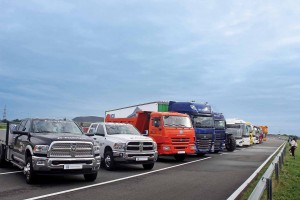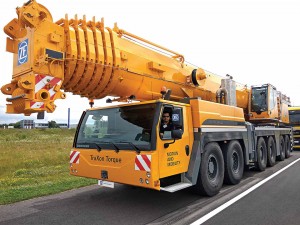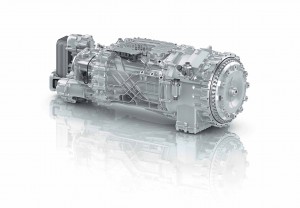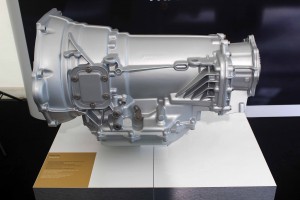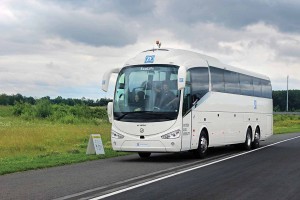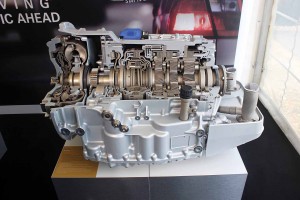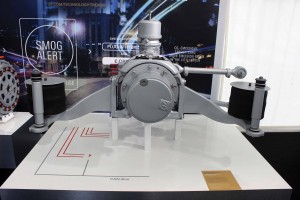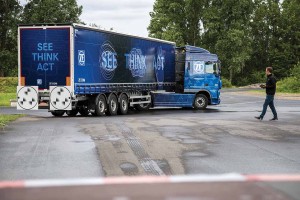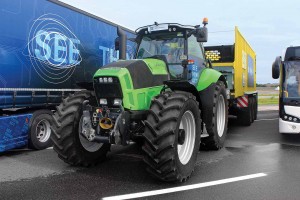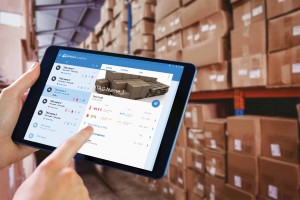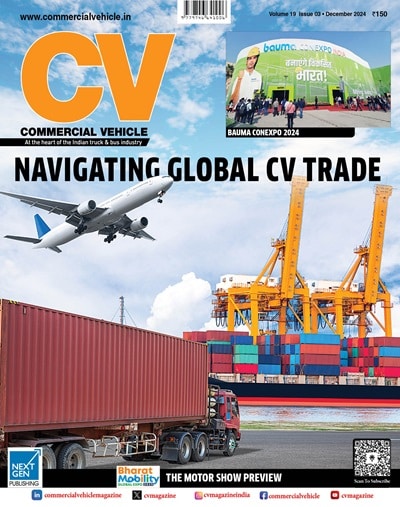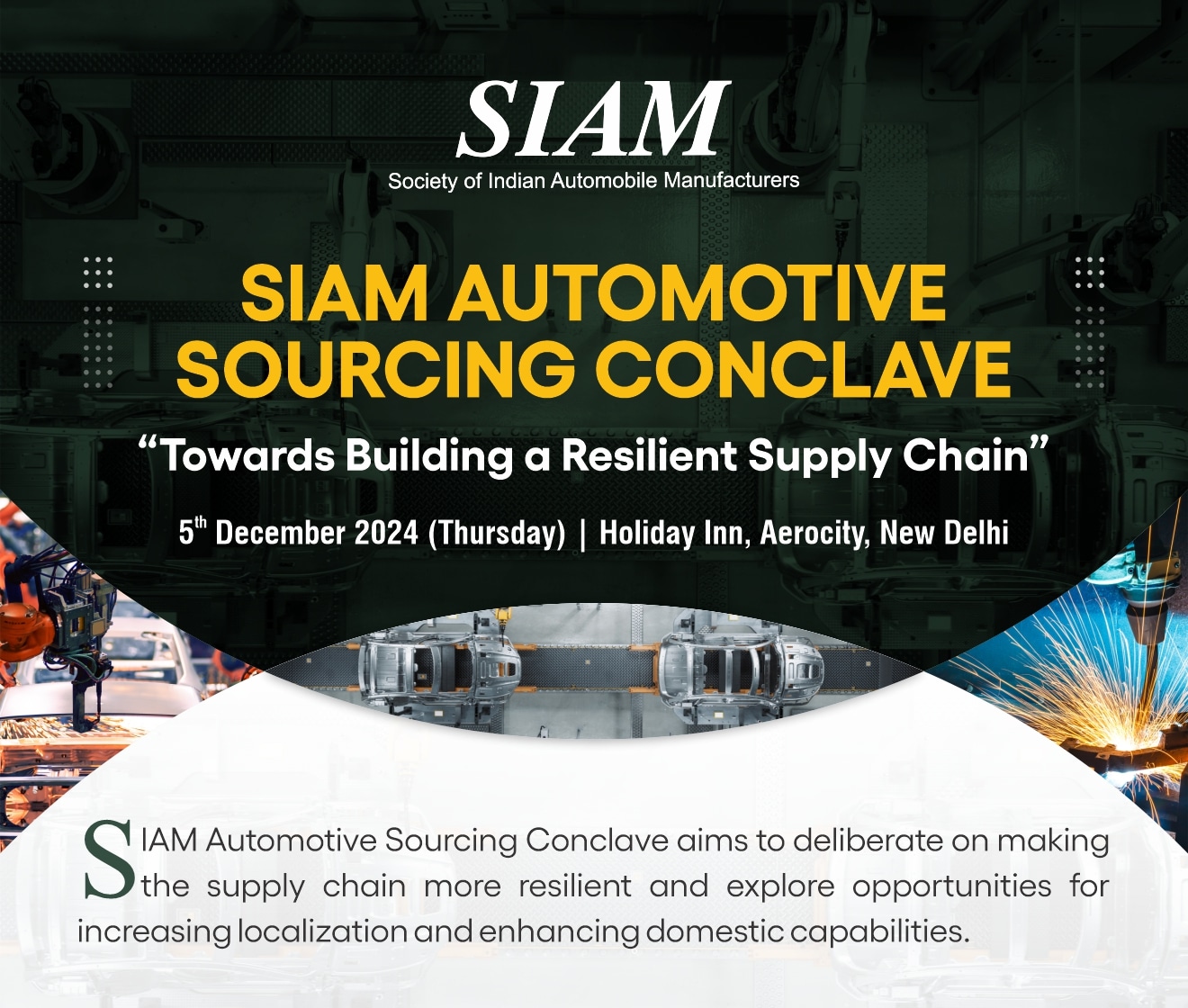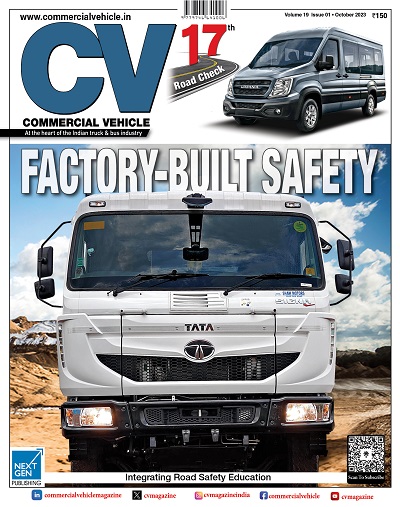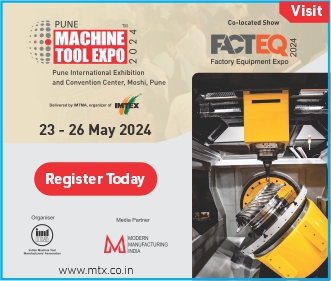ZF highlighted its technological prowess in CVs by demonstrating next generation transmissions and prototypes.
Story by:
Ashish Bhatia
The weather gods smiled upon all those who made it to the Aldenhoven test track, 19 kms from the German city of Aachen, on a day in June. It was CV’s day out with ZF Friedrichshafen AG. The German supplier arranged for journalists from the world over to travel to Aldenhoven and sample the latest technology it has had to offer in CVs. It lined up an interesting array of CVs, from a Dodge Ram pick-up to a giant Liebherr LTM 1300 mobile crane! On them were ZF’s transmission family. And, as if that was not enough, the good folks at ZF put out an electric bus with AVE 130 electric portal axles. They also showcased intelligent systems on an innovation truck and an innovation tractor. Peter Lake, Member of Board, ZF Friedrichshafen AG, emphasised upon two culturally diverse entities (ZF and TRW) to work towards a common goal. He drew attention to the addition of an all-new active and passive safety technology division to his company’s organisational structure. ZF’s acquisition of TRW assumes importance in the wake of changes expected in the world of mobility by 2025, in the area of safety, efficiency, networking, automation and electrification. Pointing towards the cross flow of technology between CVs and passenger vehicles, Lake averred, “Technology from passenger vehicles is fast making its way into commercial vehicles.”
Transmision tech
Having turned the Range Rover Evoque into an exciting SUV by fitting it with a compact, high-tech nine-speed automatic transmission, ZF, at Aldenhoven put out an Iveco Stralis XP truck with its Traxon 12-speed automated transmission. Iveco was the first CV manufacturer to express its interest in the Traxon in 2014. Replacing the AS Tronic transmission, Traxon is highly modular. On the Stralis it came with a twin-clutch, and made for easy driving and good control. Capable of networking with other vehicles through PreVision GPS, the transmission is a modern piece of engineering.On the Stralis it worked smoothly and ensured efficient shifting. While the creeping mode ensured that the truck began rolling the moment the brake pedal was released, the transmission, routing 480 hp of power produced by the 11-litre engine, had the 40,000-tonne truck gather speed and display good agility. Ratios swapped smoothly throughout the drive and the lockup clutch ensured there was no slippage. Claimed to help deliver high fuel efficiency, the transmission, during deceleration saw the integrated hydraulic intarder engage. The intarder saves braking effort of the service brakes.
Traxon Torque transmission on the six-axle Liebherr LTM 1300-6.2 72-tonne mobile crane (with a longer 78 m boom) highlighted its ability to scale-up. It also highlighted application flexibility, and came fitted with a torque converter instead of a single plate or dual-plate clutch like on the Stralis XP. Mated to a 620 hp, 16.2-litre (eight-cylinder) Liebherr engine, the Traxon Torque scales up the 3000 Nm peak torque generated by the engine to 4800 Nm, adding to the crane’s abilities. If the number of buttons on the instrument panel (to select five different steering programs) and the Bluetooth Terminal (a multi-functional control and display unit that allows remote control of crane functions) were a tad intimidating, the transmission inspired confidence. Finding use with MAN, Iveco, Ford Trucks and Foton, Traxon transmission, claimed sources, offers class leading power-to-weight ratio with the software platform combining electronics with predictive shift strategy and PreVision GPS. Available as a standard component in Ford trucks with Euro-6 driveline, the order mark’s ZF’s first volume production move outside of Europe. Claimed to have a transmission ratio spread of up to 99.7 per cent, Traxon is enabling ZF to reach out to new markets. Offering an option of four reverse gear ratios for highway construction vehicles, Traxon is also capable of finding application in hybrid CVs.
Applied on the DAF Innovation truck, Traxon hybrid transmission has made it possible to couple a 120kW (1000 Nm torque) electric motor to the driveline. Suitable for driveline electrification of long distance trucks, the transmission works such that there is a separating clutch in the bell housing and enables hybrid functionalities like recuperation, start-stop and electric-drive (as a stand alone source of propulsion or as a complimentary source that boosts overall performance). In the generator mode, the hybrid module can be integrated into the power supply of units like those that are used in refrigerated transport. Claimed to be a value addition, Traxon hybrid transmission is claimed to reduce fuel consumption and emissions in long-distance trucks to the tune of five per cent. “Due to the considerably higher mileage and fuel consumption of long-distance driving, hybrid technology makes an economic and environmentally friendly solution that pays for itself fairly quickly,” opined Fredrik Staedtler, Head, ZF Commercial Vehicle Technology Division. “Six decibels less noisy than the AS Tronic, the Traxon transmission is capable of a 35 per cent performance improvement over its predecessor,” he added.
Powerline and Ecolife
The eight-speed automatic Powerline transmission that the German supplier showcased on a big Dodge Ram 3500 pick-up fitted with a 360 hp, 5.9-litre Cummins diesel engine made for an interesting drive. Drawing from passenger vehicle transmission tech of ZF, the Powerline transmission is scalable and future proof. Its development is supported by a thought, that the use of manual transmission will nose dive. Claimed Winfried Grundler, Head, Truck & Van Driveline Technology Business Unit, ZF Commercial Vehicle Technology Division, “The ratio of manual transmissions will nose dive globally from 80 per cent to below 50 per cent.” A light weight construction that weighs 150 kg, the eight-speed unit had the Ram perform admirably. It accelerated well, and the box did a good job of swapping the cogs, both up and down.
Also aimed at gas engines, the Powerline transmission is designed for tasks that involve supplementary power take-offs as well. Its eight gears are claimed to be best suited to address requirements like weight saving, and performance and efficiency enhancement.
ZF demonstrated the abilities of the six-speed Ecolife automatic transmission by putting out two city buses, a VDL Citea and an Irizar. Promising lower fuel consumption, low noise, comfort and performance, the transmission, fitted with start-stop function, aids five to 10 per cent fuel savings according to Andreas Moser, Head, Axle & Transmission Systems for Buses & Coaches, ZF. The start-stop function, said Moser, automatically shuts-off the engine when the bus comes to a standstill, leading to zero fuel-consumption. The start-stop function will be available for engine torques in city buses in the 1,000 to 1,600 Nm torque range. Integrated into the Ecolife transmission is a retarder.
Ecotronic transmission
Based on the nine-speed manual Ecomid transmission, the Ecotronic transmission is aimed at medium-duty trucks. It is claimed to handle torque in the range of 900 and 1500 Nm. A candidate for emerging markets like India, the transmission, a result of systematic design-to-market approach, has an electronic control unit based on the same software platform as the Traxon transmission. An automated manual transmission, Ecotronic comes with drive mode architecture (Eco mode and Power mode). As per the nature of application, the Ecotronic transmission supports optional add-on functions, which enhance its value and reduce the overall lifecycle costs. On a Kamaz 65115, painted in a shade of bright orange, the Ecolife transmission made for any easy drive. If the steering called for an amount of effort to operate, the transmission made for smooth progress, shifting gears at the right time and at the right revs. The transmission complemented the power characteristics of the 260 hp 10.85-litre engine.
Electric portal axle
Reflecting upon the future, the two rear electric portal ZF axles (AVE 130) of the 18 m Sileo vestibule bus (running in Turkey and Germany) eliminate the need to shift gears. The axles operate via a single planetary gear, and have four 120kW electric motors at either end. Power comes from two 300kWh Lithium-ion phosphate batteries. It takes five hours to charge them using a mobile charger of 64kW. Making up the central drive is an electric motor coupled to a reduction gear. Claimed to offer a range of 300 km on a single charge, the motor revolves at 2500 rpm at the output stage. Designed for serial drive hybrids, the portal axle electric drive is capable of finding use in other electric drive designs. An arrangement can be attained where the IC engine generates electricity rather than propel the bus. The fact that the middle axle pulls the bus instead of the rear axle pushing makes the Sileo stand out.
‘SafeRange’ truck
Attracting the most attention, the ‘SafeRange’ manoeuvreing truck that ZF showcased at Aldenhoven deploys sensors, intelligent electronics and mechatronic systems. Establishing communication with the depot, the truck self manoeuvres to the loading dock with precision. Born as a concept in 2014 according to Winfried Gründler, head of Truck and Van Drive line Technology, Commercial Vehicle Technology Division, ZF, the development enables a long and heavy-duty truck to be easily manoeuvred with the help of a ‘tablet’. Using proprietary hardware and commercially available systems, ZF, with the use of algorithms has the system, through a camera fitted on the windshield accurately, analyse images. The system sends signals to the ZF TRW active electric power steering ReAX and Traxon hybrid auto transmission to steer the truck up to the loading dock. Use of electricity ensures zero emissions. The manoeuvre is controlled by the driver from inside the cabin by using a ‘tablet’.
Intelligent off-highway solutions
ZF has integrated intelligent system into a tractor. Six cameras mounted on the driver’s cab and the hood act as the vehicle’s sensory organs. A computer analyses the images from the camera and generates a surround-view image of the tractor’s spatial environment. The driver can view this image on a tablet from various perspectives, including a bird’s-eye view. He can also see an overview of the tractor’s movements. In case the radio contact between the ‘tablet’ (the driver is operating) and the machine breaks, the tractor stops. The maxium forward remote manoeuvring speed is four-km per hour; maximum reverse speed is two-km per hour. Laced with a pedestrian detection function, the drivetrain electrification is by ZF TERRA+ generator module. The all-wheel-drive function and the electrical boost function from the single-wheel drive on the trailer interact and complement each other delivering optimum traction management. An electric steering and ZF’s Terramatic transmission add to the equation. The tractor and trailer as a combination can tackle muddy terrain as well as uphill gradients of up to 30 per cent.
Evasive Manoeuvre Assist
Perhaps the most thrilling of all the demonstrations at Aldenhoven was the Evasive Manoeuvre Assist (EMA). It involved a truck travelling at 80 kmph, evading obstructions in its path. While the truck braked to a complete halt in front of an obstacle, the driver did not even bother to operate the wheel or the brake! Reflecting upon autonomous CV tech, the EMA detects, warns and initiates alert mode for active braking and steering. Developed in co-operation with Wabco, the technology enables automatic steering of tractor-trailers around obstructions and aids in prevention of rear-end collision. European Union regulations, claimed ZF sources, require newly registered trucks to be fitted with Electronic Stability Control (ESC), Advanced Emergency Braking Systems (AEBS) and Lane Departure Warning systems (LDW). This prompted the company to incorporate the next level of active safety systems into the Innovation Truck.
EMA along with Highway Driving Assist (HDA) utilises advanced sensors that can ‘see’, ‘think’ and ‘act’ in the nick of time. Mentioned Mitja Schulz, Senior Vice President & General Manager Commercial Steering Systems, ZF TRW, “Our innovative function ensures that a loaded semi-trailer simultaneously evades, brakes and stabilises automatically. This also avoids rear-end collisions.” Designed to overcome the shortcomings of sudden manual avoidance manoeuvres according to Schulz, the driver can override EMA at any time during the autonomous evasive manoeuvre by simply taking control of the steering wheel, brakes and the throttle. “We can have the HDA ready for volume production in approximately two years. Drivers, pedestrians and cyclists will benefit from these safety improvements. It will by then be absolutely ready to meet all requirements needed for truck platooning,” averred Schulz. Lateral EMA continues to be a challenge, and would mean equipping the truck with a 360-degree field of view. Considering the range of technologies ZF has been introducing as well as developing, it is quite clear, that the future is not just looking bright, it is also looking safe.
Detagtive logistics
‘deTAGtive logistics’ developed by ZF’s explores the connectivity factor crucial to the logistics industry. The platform is engineered to enable transparent fleet management, reduce zero load instances, monitor fuel consumption and allow drivers to have their rest periods as part of route planning. Able to only track the vehicles until now, dispatchers will now be able to track the cargo as well. The platform allows a constantly cargo check, and is claimed to have been bundled with a user friendly software package. Said to report previously ignored details like the temperature range or the effect of vibration on the cargo, the platform is relatively easy to install using Bluetooth Smart Technology. The battery powered sensors, with a surface area smaller than that of a business card, can be easily installed almost anywhere without the need for extensive cabling. They can be used on transport containers, pallets and swap bodies for up to five years before being recycled. The tags can communicate with existing telematics hardware and the Openmatics’ stationary TAG finder as well as smart phones and tablets.



